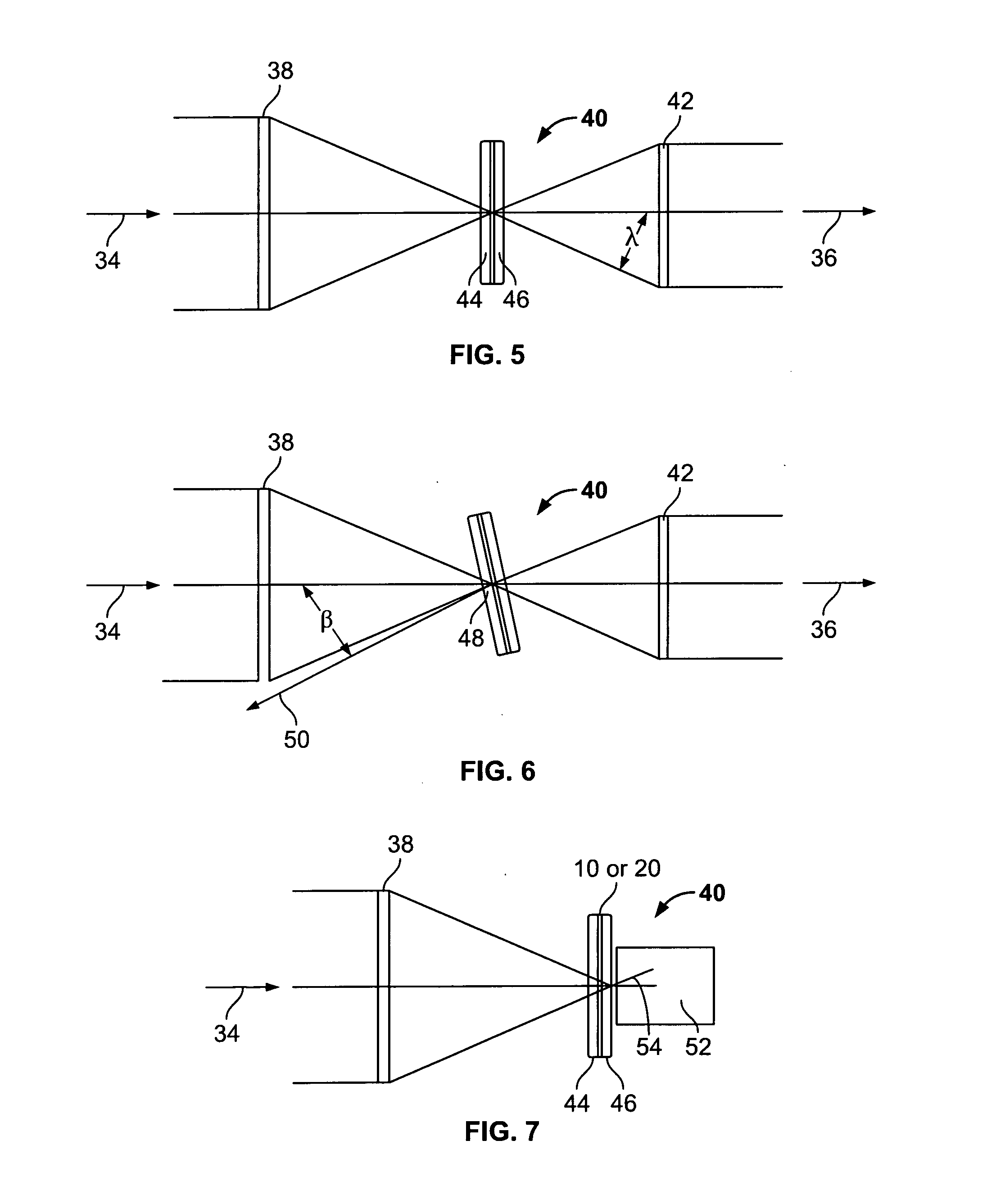Grating like optical limiter
a technology of optical limiter and grating, applied in the field of optical power limit, can solve the problems of large volume of liquid to be heated, large amount of energy propagation, and high power requirements, and achieve the effect of limited numerical apertur
- Summary
- Abstract
- Description
- Claims
- Application Information
AI Technical Summary
Benefits of technology
Problems solved by technology
Method used
Image
Examples
Embodiment Construction
[0031]Although the invention will be described in connection with certain preferred embodiments, it will be understood that the invention is not limited to those particular embodiments. On the contrary, the invention is intended to cover all alternatives, modifications, and equivalent arrangements as may be included within the spirit and scope of the invention as defined by the appended claims.
[0032]Turning now to the drawings, FIGS. 1-4 illustrate optical limiter configurations using power-limiting gratings of two types. The first type is an optical limiting solid grating comprising multiple layers of transparent dielectric material, where alternating layers are totally transparent, and intervening layers include a mixture of light absorbing particles. The second type is an optical limiting solid grating comprising alternating layers of totally transparent dielectric material, and intervening layers of a thin, nanometer-thickness, partially-light absorbing material.
[0033]In the fir...
PUM
 Login to View More
Login to View More Abstract
Description
Claims
Application Information
 Login to View More
Login to View More - R&D
- Intellectual Property
- Life Sciences
- Materials
- Tech Scout
- Unparalleled Data Quality
- Higher Quality Content
- 60% Fewer Hallucinations
Browse by: Latest US Patents, China's latest patents, Technical Efficacy Thesaurus, Application Domain, Technology Topic, Popular Technical Reports.
© 2025 PatSnap. All rights reserved.Legal|Privacy policy|Modern Slavery Act Transparency Statement|Sitemap|About US| Contact US: help@patsnap.com



